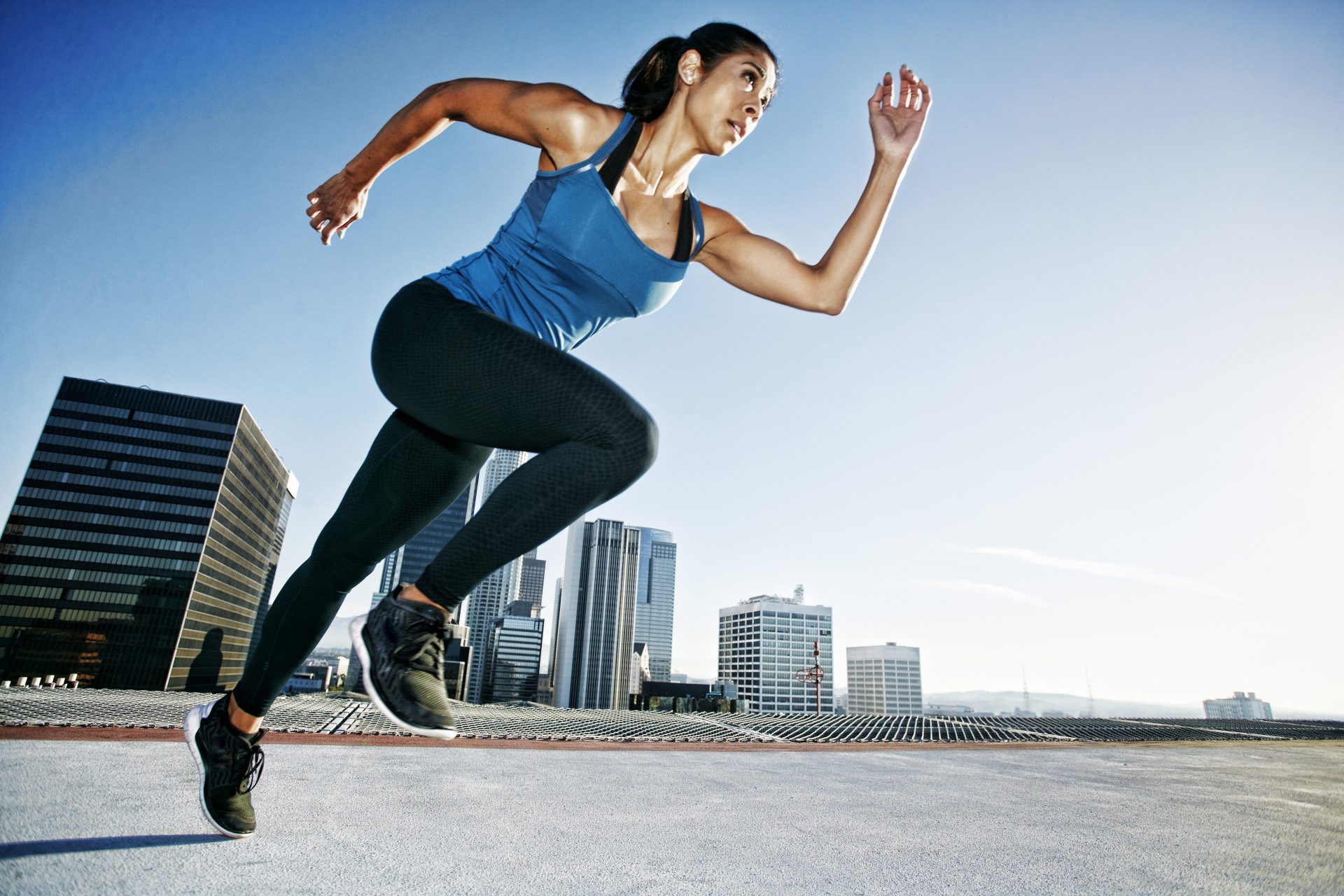Compression wear is having a moment right now, with activewear brands claiming that their uber-tight leggings can make you run faster and recover quicker. But do these promises really hold up?
At the 2000 Sydney Olympics, indigenous Australian athlete Cathy Freeman flew across the finish line in the 400 metre sprint final. The other Olympians around her were clad in familiar minimal race-wear. But Freeman won gold in a now iconic head-to-toe suit.
The Swift Suit was carefully crafted by Nike engineers to minimise wind drag and to allow Freeman to run as efficiently as possible. Each part of her body was expertly draped in technical fabrics designed to maximise the body’s efficiency, including her lower legs that were wrapped in a specially-designed compression material.
Compression wear, most typically in the form of leggings, has risen in popularity for both athletes and non-professionals in recent years. Technical brands such as 2XU, Nike, and Under Armour are leading the charge – and demand is expected to keep growing, with the compression wear and shapewear market expected to reach $5.6 billion (approx. £4.4 billion) by 2022.
So, what exactly are compression leggings and how are they different to our regular tights? And most importantly, can they help us run as fast as Freeman?
You may also like
The best leggings with pockets so you can carry your phone on your next run
What are compression leggings?
Compression leggings are technical garments that are made to fit skin-tight in order to apply constant pressure to the body. Doing so at various points in the body help to increase circulation.
Compression leggings are generally made from a mix of polyamide or nylon, plus elastane. The higher the elastane, the higher the level of compression. Regular gym or running leggings are usually made from this blend too, but have much lower levels of elastane so they don’t feel as restricting.
What are the benefits of wearing compression leggings?
It’s long been thought that wearing compression leggings can improve athletic performance – ie help you run faster and for longer. But based on studies, the general consensus seems to be that compression wear doesn’t have significant impact on performance.
However, it does help with recovery afterwards.
Here’s how it works: when you do strenuous exercise, your body produces metabolic waste such as lactic acid. That lactic acid is what makes your muscles feel sore after exercising. The tightness of compression leggings increases blood circulation to help your body flush out the metabolic waste faster – allowing you to recover more quickly.
“If you run a half marathon during the weekend and you’re not used to running that kind of distance, it wouldn’t help you during the event. But if you put them on afterwards and wear them for as long as possible – even sleep in them – you’re likely to experience less soreness the following day,” says Dr Jessica Hill, sports physiologist and senior lecturer at St Mary’s University in London.

Kimberley Morrison, professional triathlete and ambassador for CEP sportswear, attests that compression leggings allow her to recover faster so that she can make the most of her busy training schedule. After a training session, Morrison will get her recovery leggings on within the hour, and wear them for up to four or five hours. “I still feel sore, but I don’t feel as sore or for as long.”
Morrison’s compression gear is tailor-made for her legs, measured at key points to fit tightly and provide adequate compression. According to Dr Hill, this is key to making surethat the leggings are actually effective.
“If you buy a pair of commercially available compression garments, they come in standard sizes: small, medium, or large. If I get 10 people in a room who are all a medium, they’re all going to have different body shapes. Ten people might all be the same height and weight, but they’ve all got different limb circumferences – some might have bigger thighs, some might have bigger calves. The circumference of that limb is going to affect how the garment fits and how much pressure is inflicted on the body – the bigger the circumference, the tighter the garment is going to be.”
What this means is that if you’re buying your leggings ‘off the rack’, it might not give you enough compression to actually see the benefits.
You may also like
High-waisted leggings: 7 of the gym tights that actually stay up while you work out
Should you buy compression leggings?
This leaves us with the question of whether it’s worth buying compression leggings.
If you want them because you think they’ll make you run faster, then it’s likely you’ll be disappointed. But if you’d like a pair to speed up your muscle recovery, then it would be worth your while – depending on the fit.
For compression wear to be most effective for recovery, Dr Hill suggests having them fitted to you. Failing that, have a look for brands who measure their sizes in limb circumference, rather than height, as you’ll be more likely to find a better fit.
If you do go off the rack, make sure that they’re tight on you, but not so tight that your feet swell or hurt.
It’s also worth remembering that you should wear compression leggings for at least one hour after exercise – and the longer you wear them for, the better the outcome will be.
While compression leggings won’t give us the ability to run like Cathy Freeman, at least they’ll help us recover like a pro.
Here are some of our favourite compression leggings:
-
COLD.RDY ALPHASKIN LONG LEGGINGS
BUY NOW
-
RECOVERY PRO TIGHTS WOMEN
BUY NOW
Follow @StrongWomenUK on Instagram for the latest workouts, delicious recipes and motivation from your favourite fitness experts.
IMAGES: Getty
Source: Read Full Article
